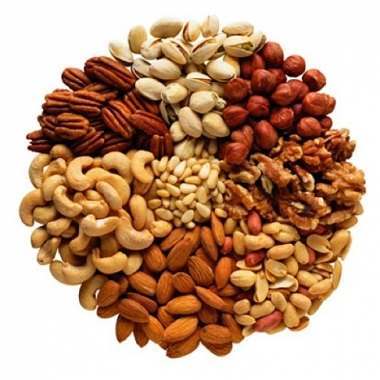Still Constipated although you Eat Foods High in Fiber
Bowels function better when you eat high fiber foods. A conflicting effect can occur if you don’t get adequate exercise and enough fluids. If a diet low in fiber is how you have been eating, increasing fiber in your diet too rapidly can cause bloating, constipation, gas, and cramps in the abdomen. Changes should be gradual when adjusting your diet, this along with increasing levels of activities can alleviate constipation and support a healthy digestive system.
Types of Fiber
 Roughage is another term for insoluble fiber, this type of fiber derives from the part of a plant which is indigestible. This type of fiber cannot be dissolved in water, it passes through our systems and is never absorbed. Foods which are abundant in soluble fiber are nuts, vegetables, fruits, and cereals made from whole grains.
Roughage is another term for insoluble fiber, this type of fiber derives from the part of a plant which is indigestible. This type of fiber cannot be dissolved in water, it passes through our systems and is never absorbed. Foods which are abundant in soluble fiber are nuts, vegetables, fruits, and cereals made from whole grains.
Soluble fiber transforms into a gel in your digestive system, this does a gradual breakdown. Foods which are high in this type of fiber include dried beans, oatmeal, pears and apples, both fibers are important.
What’s the Significance
By adding bulk to feces, insoluble fiber aids in the regulation of movements by the bowels, this helps to ease the fecal matter through the digestive system. Hemorrhoids as well as diverticulitis can be prevented by making sure to eat foods with insoluble fiber in them. You must increase the amount of fluids you drink as you increase the amount of fiber you are eating, otherwise your stools can become too bulky to pass comfortably. It’s essential to increase your fiber gradually to avoid problems with digestion.
Solutions and Prevention
 Adding fiber gradually and working the amount you consume slowly up to the desired amount is the best way to increase fiber in your diet, otherwise you may have adverse effects such as gas, bloating, and constipation. If you are a man under fifty years old, you should have about thirty-eight grams of fiber on a daily basis. If you are a woman under fifty, you should be getting around twenty-five grams of fiber each day. After the age of fifty the amount of fiber decreases in both genders, the men should have about thirty grams of fiber daily and the women should have around twenty-one grams a day.
Adding fiber gradually and working the amount you consume slowly up to the desired amount is the best way to increase fiber in your diet, otherwise you may have adverse effects such as gas, bloating, and constipation. If you are a man under fifty years old, you should have about thirty-eight grams of fiber on a daily basis. If you are a woman under fifty, you should be getting around twenty-five grams of fiber each day. After the age of fifty the amount of fiber decreases in both genders, the men should have about thirty grams of fiber daily and the women should have around twenty-one grams a day.
Suggestions
The use of fruits and vegetables in their whole forms is preferred when increasing your fiber and lose the juices. Instead of eating baked goods full of refined sugars and carbs, choose cereals and breads made from whole grains. In addition to doing these things replace meats in your meals a few days each week with legumes. If you haven’t been getting regular exercise you should start. A ten minute walk a few times each day can be taken, gradually increase the time until you get up to thirty minute walks several times a day.
Things to Consider
Fiber supplements may be something your physician may recommend. Always confer with your physician before you make any drastic changes to your diet.












